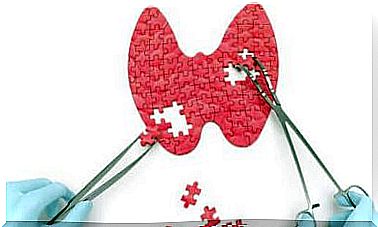Confidence Building Exercises

Self-confidence is an extremely important aspect of our mental health. Without self-confidence, you may feel tense in new or group environments. Therefore, confidence-building exercises should be considered in a group setting. It is crucial to feel comfortable with other people.
Trust allows you not only to create pleasant and safe spaces, but also to facilitate personal interactions. To understand its importance, you need to think about how you feel and what physical manifestations you experience when you are in an unfamiliar environment.
The image that comes to mind is undoubtedly that of a tense body and a worried mind. Now think how that changes when you’re in a place or with someone you think you know. You probably feel very different!
However, trust is not built overnight as it requires time and gradual approach. For this purpose, confidence-building exercises can serve as a good starting point.
Confidence Building Exercises for All Ages
Confidence-building exercises can be done with children, teens, and adults. They have a playful component that can be entertaining for everyone.
A moderator must be present in all categories. They will mainly focus on instructing those who participate and making sure everything goes as planned. Therefore, they should be mindful of being a role model with their attitude and remember that other social-emotional skills are also being worked on.

1. The Trust Trap
A great exercise to build trust between the members of a group is the trust trap. To begin this activity, the group must divide into pairs in a large room. No further materials are required.
The moderator has to make sure that the partners don’t match, meaning they don’t have similar physical or physical characteristics. The partners should face each other with the tops of their feet touching. They should also hold hands.
Once they are all in this position, the moderator should give a signal, whereupon the pairs begin to lean back, as if they were falling, but protected by their partner.
The first reactions will probably be uncertainty, but after that all group members will feel more relaxed. At that moment, the moderator can make the exercise more difficult by indicating some extra movements. The activity may end after an allotted time or after the additional challenges suggested by the moderator.
2. The wind and the tree
This confidence building exercise is an adaptation of the previous one. A bandana or blindfold is required and the ideal location is an open space.
The participants must stand in a circle. A volunteer must stand in the center with a blindfold on. The volunteer must relax his body.
When the moderator gives the order, the rest of the group begins to push and move the person in the middle from one side to the other, as if passing him on. After a few moves, another volunteer can take his place in the center of the circle.
The duration depends on whether everyone wants once in the middle or not. Otherwise, the exercise can take anywhere from 15 to 20 minutes.
3. Confidence Building: The Confidence Walk
This confidence building exercise can be done in pairs in an open space. You have to place irregularly shaped objects around the open space and mark a starting point and a finish line.
One of the partners must be blindfolded, while the other will be the one who will guide him with directions so that they can safely reach the end of the trail.
The blindfolded person will receive instructions such as “walk to the right,” “jump over the hoop” or “take two steps to the left,” depending on how the objects are arranged. For example, you can use rings, cones and ropes.
The estimated duration of the activity depends on the trail. Each partner must take turns playing the other role. It doesn’t matter how long it takes to complete it. The most important thing is that you arrive safely and confidently carry on.
Each of the proposed dynamics strengthens the group’s confidence. The only way to reach the finish line is by working together. This means that the exercise makes people understand the importance of teamwork.
4. Fan of praise
Self-confidence can be worked on, to teach the value of personal positive aspects. This activity requires a minimum of six participants in a large room so they can stand in a circle.
It is a dynamic that requires prior knowledge of the group. The group will need scraps of paper and pens or pencils. To start, each participant should have their own piece of paper and pen or pencil. The moderator will ask them to write down their name. When they’re done, the moderator signals them to pass the paper to the person to their left.
Then the moderator tells everyone to write something positive or nice about the person whose paper it belongs to. It should be made clear that mean or inappropriate comments are not allowed.
When all participants have finished writing about each of the group members, the moderator will read the papers aloud, or ask someone to do so. If the participants accept it, they can dig deeper and write more about each person.
This exercise is designed to improve confidence and self-esteem based on what others see in you. Another way to do the exercise is to put the papers in a box and have everyone draw one. The roles are then exchanged.

5. Tell me what you draw
The final confidence building exercise is to divide the group into pairs, and give each pair a sheet of paper and a pencil. One of the two has to start making a drawing while the other doesn’t see it. They have a few minutes to make the drawing.
When everyone is ready, the moderator gives the signal and the person who made the drawing now has to give his partner directions to help him copy the drawing.
Since it consists of giving different interpretations, this game allows people to develop and stimulate expression and communication skills. The game ends as soon as the other person has completed the replicated drawing.
Sharing emotions, one of the goals of confidence building exercises
After children, teens, or adults do these exercises, they should rate what they felt, what they liked the most, and what they didn’t like so much. This allows them to express and manage their emotions. The moderator is the one who invites the participants to form a circle and share their experiences.
It is also very important to contextualize the activities and to become aware of the importance of trust and good interpersonal relationships in groups.
This helps create a climate where everyone feels safe to share their own experiences and cherish respect.








